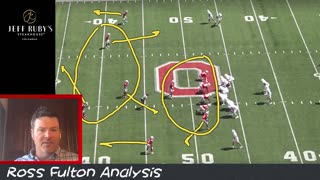Premium Only Content

Male Hirsch Antler Plays With Tree Branch
Male Hirsch Antler Plays With Tree Branch , Deer live in a variety of bio mes, ranging from tundra to the tropical rain forest. While often associated with forests, many deer are ecotone species that live in transitional areas between forests and thickets (for cover) and prairie and savanna (open space).
The majority of large deer species inhabit temperate mixed deciduous forest, mountain mixed coniferous forest, tropical seasonal/dry forest, and savanna habitats around the world.
Clearing open areas within forests to some extent may actually benefit deer populations by exposing the under story and allowing the types of grasses, weeds, and herbs to grow that deer like to eat. Additionally, access to adjacent croplands may also benefit deer.
However, adequate forest or brush cover must still be provided for populations to grow and thrive.
Deer are widely distributed, with indigenous representatives in all continents except Antarctica and Australia, though Africa has only one native deer, the Barbary stag, a subspecies of red deer that is confined to the Atlas Mountains in the northwest of the continent. However, fallow deer have been introduced to South Africa.
Small species of brocket deer and pudús of Central and South America, and muntjacs of Asia generally occupy dense forests and are less often seen in open spaces, with the possible exception of the Indian muntjac.
There are also several species of deer that are highly specialized, and live almost exclusively in mountains, grasslands, swamps, and "wet" savannas, or riparian corridors surrounded by deserts. Some deer have a circumpolar distribution in both North America and Eurasia.
-
 LIVE
LIVE
The Chris Salcedo Show
12 hours agoAmericans Are Tired Of Leftists & Fake-GOP Who Cater To Them
677 watching -
 LIVE
LIVE
Game On!
19 hours agoFootball IS BACK! Cowboys vs Eagles Opening Night Kickoff!
3,606 watching -
 LIVE
LIVE
The Bubba Army
22 hours ago#1 Documentary IN THE WORLD! - Bubba the Love Sponge® Show | 9/04/25
2,963 watching -
 39:31
39:31
Her Patriot Voice
14 hours ago $1.07 earnedBlack Conservative Surrounded + ROBBED By Leftists!
4.27K21 -
 13:25
13:25
The Gun Collective
14 hours agoWOW! A LOT of new GUNS just dropped!
4.44K7 -
 LIVE
LIVE
BEK TV
23 hours agoTrent Loos in the Morning - 9/04/2025
207 watching -
 8:13
8:13
Geoff_Tac
1 day agoMAC 1014 Shotgun (Benelli Clone)
2.54K2 -
 22:30
22:30
Ohio State Football and Recruiting at Buckeye Huddle
14 hours agoOhio State Football: How Matt Patricia Confused Arch Manning and Texas
8.98K -
 9:07
9:07
MattMorseTV
18 hours ago $4.52 earnedTrump just BLASTED the CCP.
29.8K47 -
 58:44
58:44
The Official Corbett Report Rumble Channel
13 hours agoTurning the Tide on 9/11 with Curt Weldon
9.71K17